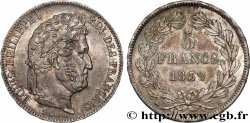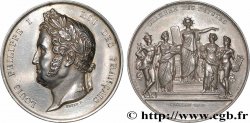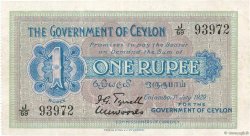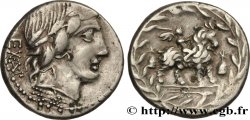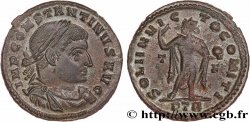E-auction 339-253858 - fme_412455 - LOUIS-PHILIPPE I Médaille, inauguration de la colonne de Juillet (Bastille)
You must signin and be an approved bidder to bid, LOGIN TO BID. Accounts are subject to approval and the approval process takes place within 48 hours. Do not wait until the day a sale closes to register. Clicking on « bid » constitutes acceptance of the terms of use of cgb.fr private e-auctions.
Bids must be placed in whole Euro amounts only. The sale will start closing at the time stated on the item description; any bids received at the site after the closing time will not be executed. Transmission times may vary and bids could be rejected if you wait until the last second. For further information ckeck the E-auctions F.A.Q.
NO BUYER'S FEE.
NO BUYER'S FEE.
| Estimate : | 200 € |
| Price : | 72 € |
| Maximum bid : | 99 € |
| End of the sale : | 14 October 2019 18:21:00 |
| bidders : | 8 bidders |
Type : Médaille, inauguration de la colonne de Juillet (Bastille)
Date: 1845
Mint name / Town : 75 - Paris
Metal : bronze
Diameter : 51 mm
Orientation dies : 12 h.
Engraver CAUNOIS François Augustin (1787-1859)
Weight : 63 g.
Edge : lisse
Coments on the condition:
Magnifique médaille avec de très beaux reliefs et une agréable patine lisse et brillante, bien homogène
Obverse
Obverse legend : LOUIS-PHILIPPE IER - ROI DES FRANÇAIS.
Obverse description : Tête laurée de Louis-Philippe à droite.
Reverse
Reverse legend : COLONNE - DE JUILLET // 27 28 29 - 1830 // A LA GLOIRE / DES CITOYENS / MORTS - POUR / LA DÉFENSE / DES LOIS/.
Reverse description : Colonne de juillet .
Commentary
Médaille signée CAUNOIS F. François Augustin Caunois est un sculpteur et médailleur français, né le 13 juin 1787 à Bar-le-Duc et mort en 1859 à Paris.
En tant que médailleur, Caunois participa à plusieurs concours monétaires. On connait de lui un essai pour le concours de 1830 (pièce de 100 Francs à l’effigie de Louis-Philippe Ier). De même, il fit partie des 25 graveurs qui participèrent au concours monétaire de 1848. Il s'agissait de créer de nouvelles pièces de 20 francs, 5 francs, et 10 centimes. François Augustin Caunois proposa une pièce de 5 francs, mais le projet d'Eugène-André Oudiné fut retenu.
La colonne de Juillet est une colonne élevée sur la place de la Bastille à Paris, entre 1835 et 1840 en commémoration des Trois Glorieuses. Ces trois journées de la révolution de juillet 1830 amenèrent la chute de Charles X et du régime de restauration, puis l'instauration de la monarchie de juillet, avec le règne de Louis-Philippe Ier, duc d'Orléans, devenu roi des Français.
Sur une plaque, au bas de la colonne, il est écrit :
« À la gloire des citoyens français qui s'armèrent et combattirent pour la défense des libertés publiques dans les mémorables journées des 27, 28, 29 juillet 1830. »
Le fût de la colonne porte le nom des victimes des journées révolutionnaires de juillet 1830 et le sommet est orné d'une sculpture en bronze doré d'Auguste Dumont : Le Génie de la Liberté. Enfin, la colonne est construite au-dessus d'une nécropole accueillant les corps de révolutionnaires tombés pendant les journées de juillet.
Le 27 juillet 1831, Louis-Philippe posa la première pierre de la Colonne, en l'honneur des Trois Glorieuses. Elle fut inspirée par la colonne Trajane de Rome. Elle fut dessinée par l'architecte Jean-Antoine Alavoine, et les travaux ne commencèrent qu'en 1835, où l'on procéda à la fonte des pièces en bronze. La décoration fut réalisée en 1839 par l'architecte Joseph-Louis Duc et la colonne fut terminée en 1840 pour célébrer les dix ans de la révolution.
En tant que médailleur, Caunois participa à plusieurs concours monétaires. On connait de lui un essai pour le concours de 1830 (pièce de 100 Francs à l’effigie de Louis-Philippe Ier). De même, il fit partie des 25 graveurs qui participèrent au concours monétaire de 1848. Il s'agissait de créer de nouvelles pièces de 20 francs, 5 francs, et 10 centimes. François Augustin Caunois proposa une pièce de 5 francs, mais le projet d'Eugène-André Oudiné fut retenu.
La colonne de Juillet est une colonne élevée sur la place de la Bastille à Paris, entre 1835 et 1840 en commémoration des Trois Glorieuses. Ces trois journées de la révolution de juillet 1830 amenèrent la chute de Charles X et du régime de restauration, puis l'instauration de la monarchie de juillet, avec le règne de Louis-Philippe Ier, duc d'Orléans, devenu roi des Français.
Sur une plaque, au bas de la colonne, il est écrit :
« À la gloire des citoyens français qui s'armèrent et combattirent pour la défense des libertés publiques dans les mémorables journées des 27, 28, 29 juillet 1830. »
Le fût de la colonne porte le nom des victimes des journées révolutionnaires de juillet 1830 et le sommet est orné d'une sculpture en bronze doré d'Auguste Dumont : Le Génie de la Liberté. Enfin, la colonne est construite au-dessus d'une nécropole accueillant les corps de révolutionnaires tombés pendant les journées de juillet.
Le 27 juillet 1831, Louis-Philippe posa la première pierre de la Colonne, en l'honneur des Trois Glorieuses. Elle fut inspirée par la colonne Trajane de Rome. Elle fut dessinée par l'architecte Jean-Antoine Alavoine, et les travaux ne commencèrent qu'en 1835, où l'on procéda à la fonte des pièces en bronze. La décoration fut réalisée en 1839 par l'architecte Joseph-Louis Duc et la colonne fut terminée en 1840 pour célébrer les dix ans de la révolution.








 Report a mistake
Report a mistake Print the page
Print the page Share my selection
Share my selection Ask a question
Ask a question Consign / sell
Consign / sell
 Full data
Full data